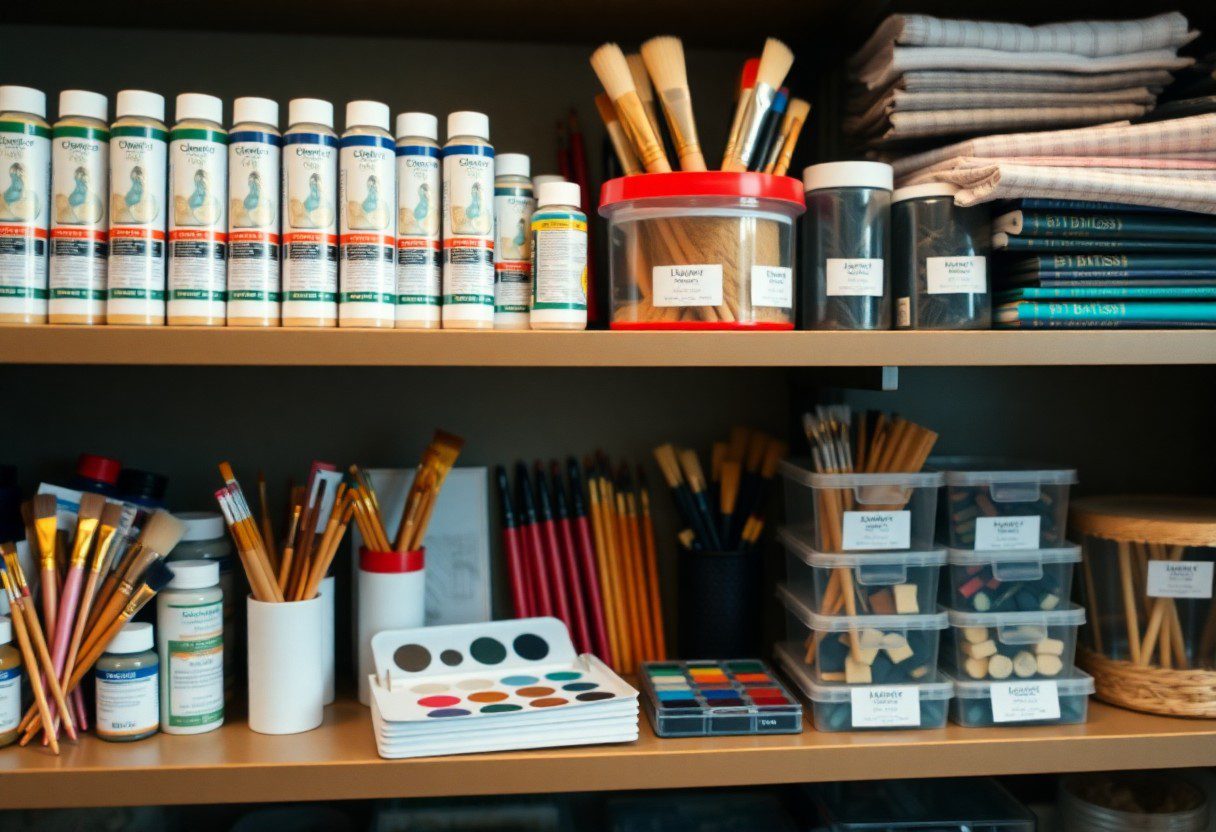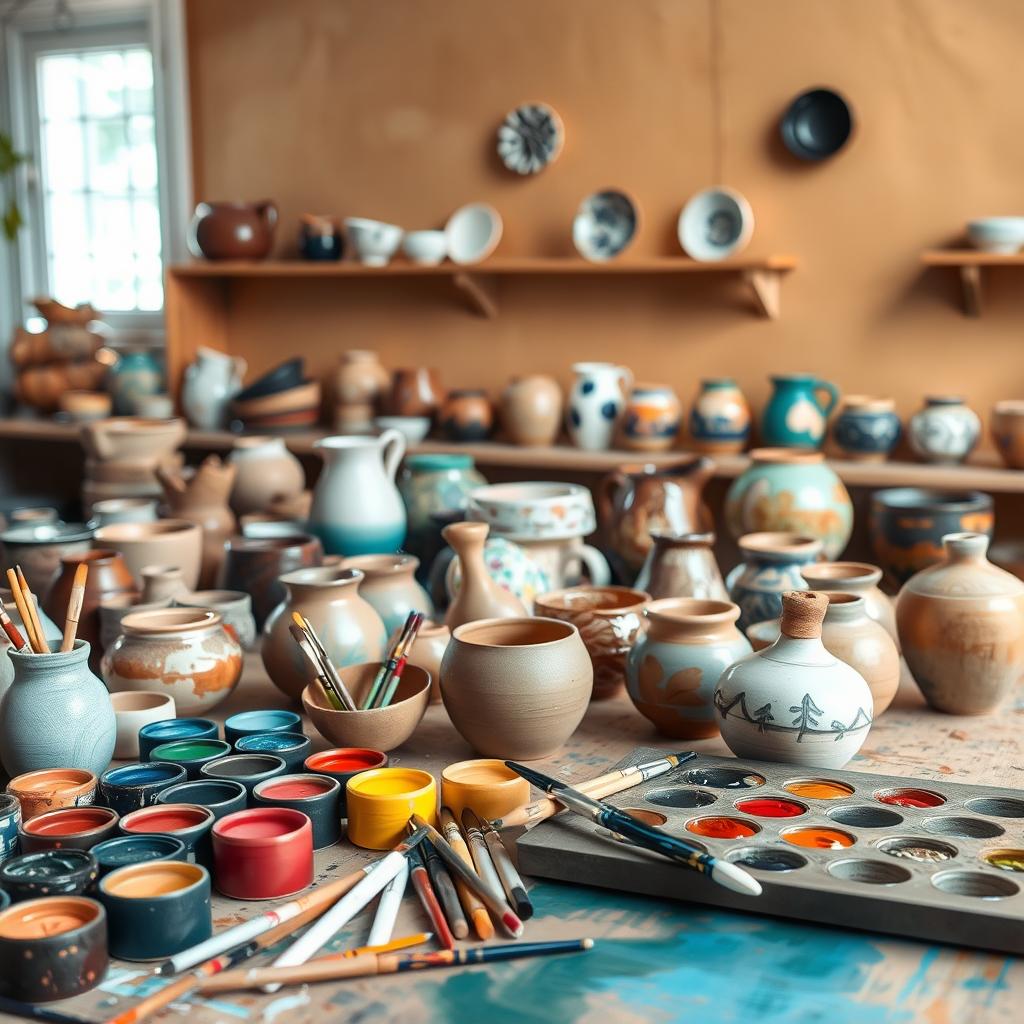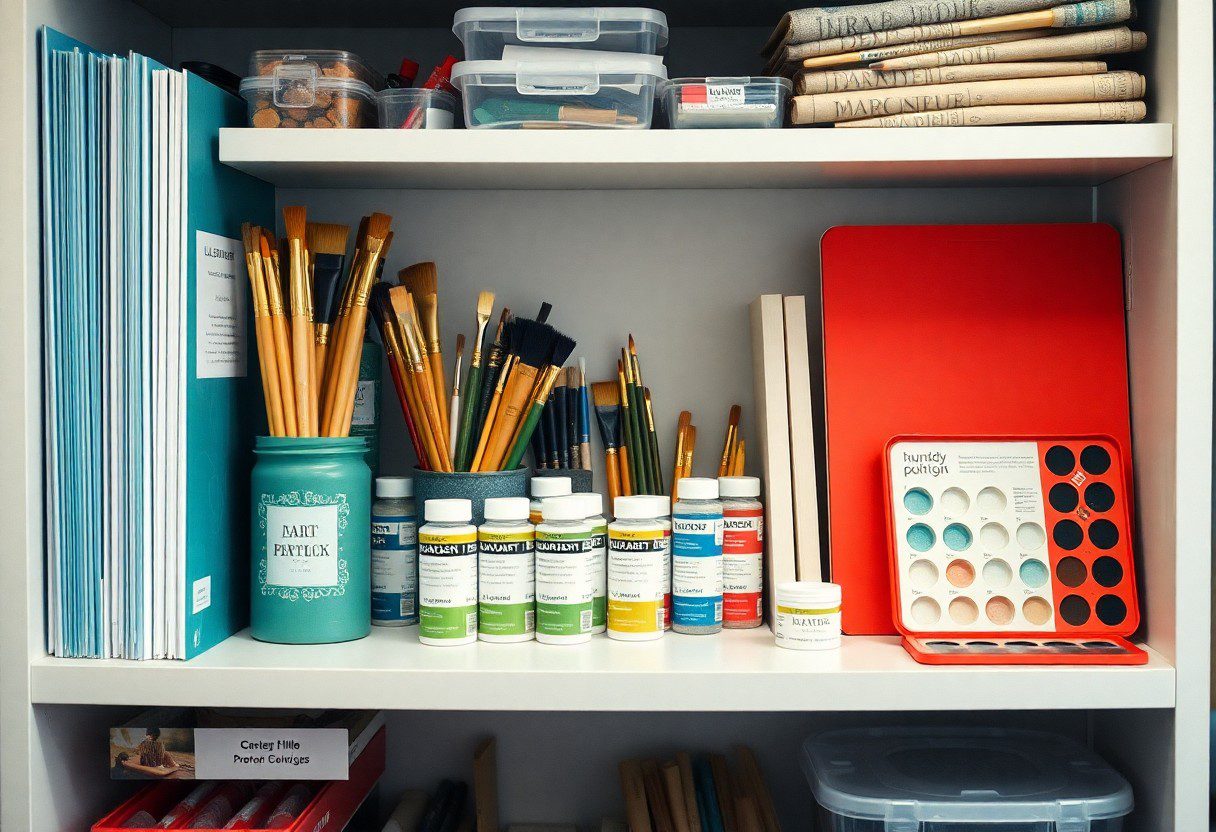Supplies can quickly become chaotic if not managed effectively. To maximize your creativity and streamline your process, it’s important to organize your art materials in a way that works for you. In this post, we’ll explore practical tips that will help you create a tidy and inspiring workspace, so you can focus on what you love most—your art. From storage solutions to categorization strategies, these insights will empower you to reclaim control over your supplies and enhance your artistic experience.
Assessing Your Art Supplies
Assessing your art supplies is the first step in streamlining your creative space. Take the time to evaluate what you currently own, how frequently you use each item, and the quality of those supplies. This process not only helps you understand your inventory but also enables you to identify surplus and underutilized items. By gaining clarity on your collection, you can make informed decisions on what to keep, donate, or replace, setting the stage for a more organized workspace.
Inventory Inventory
Beside organizing your workspace, creating an inventory of your art supplies allows you to track what you have and what you might need. Start by listing all your items, categorizing them based on type—such as paints, brushes, canvases, and tools. Digital tools or spreadsheets can be helpful for maintaining this inventory, making it easier to update as your collection evolves. An accurate inventory not only saves time when you’re ready to create but also prevents unnecessary purchases.
Identifying Essentials
Below your extensive collection, some supplies stand out as crucial for your artistic process. Prioritize items that you use frequently or cannot easily replace. These could include your favorite paints, brushes, or sketchbooks. Analyzing your creative habits will help you determine these crucials, ensuring you are well-equipped for your art projects. Clearing your supplies of any non-crucial items allows for a more functional workspace, fostering a harmonious environment for your creativity to flourish.
Assessing your crucials requires reflection on your artistic style and practices. A functional workspace optimized with your must-have items will enhance your efficiency and enjoyment in creating art. Consider the techniques you most often employ and the materials that best suit them. By focusing on what truly supports your creative endeavors, you can eliminate distractions and curate a space that inspires you, allowing for increased productivity and satisfaction in your work.
Storage Solutions
There’s no one-size-fits-all approach when it comes to art supply storage. Finding the right storage solutions tailored to your needs can significantly impact your creative process. Consider the types of supplies you have and how you like to work, whether on a large scale or in smaller sessions, to determine what will work best for you.
Bins and Containers
With a variety of bins and containers available, you can effectively categorize your art supplies by type or project. Opt for clear plastic bins to easily see the contents, or choose decorative boxes for a more aesthetic approach. Labeling each container will streamline your workflow and help you locate what you need without sifting through a disorganized mess.
Shelving and Drawers
Across your workspace, shelving and drawers can serve as multifunctional storage. Shelves provide open storage for frequently used items while keeping everything accessible. Drawers are ideal for hiding away smaller supplies, promoting a tidy appearance without sacrificing usability.
Further enhancing your efficiency, consider adjustable shelving units that can accommodate supplies of various heights and sizes. Drawer organizers can help you maximize space, keeping smaller items neatly separated and easy to locate. Create designated zones on your shelves and in your drawers for different mediums, ensuring everything has its place and is readily available when inspiration strikes.
Categorizing Supplies
It’s important to categorize your art supplies to streamline your creative process and make finding what you need effortless. By organizing your materials into specific groups, you can quickly access everything needed for each project, minimizing distractions and maximizing your creativity.
By Medium
The best way to start categorizing is by medium. Separate your supplies into groups like paint, pencils, inks, and pastels. This method allows you to see at a glance what you have for each type of artwork you intend to create, ensuring that your materials are always ready for use.
By Project
Against the notion of a one-size-fits-all approach, organizing your supplies by project can significantly enhance your efficiency in tackling different art endeavors. This method allows you to gather everything related to a specific piece in one place, making it easier to stay focused and creative.
In addition, organizing by project helps you keep track of ongoing works and potential ideas. You can dedicate a container or shelf for each project, keeping relevant supplies, sketches, or references together. This approach not only reduces clutter but also fosters inspiration as you can readily access your materials whenever you’re ready to create.
Creating a Functional Workspace
To make your art practice more enjoyable and productive, creating a functional workspace is vital. A well-organized area allows you to focus on your creativity rather than searching for supplies. Consider not only your personal style but also the practical aspects of how you work, ensuring that your environment fosters inspiration and efficiency.
Workspace Layout
Workspace layout plays a significant role in maximizing your productivity. Arrange your supplies in a manner that reflects your working style—keep your most-used materials within arm’s reach, while storing less frequently used items further away. Utilize vertical space with shelves and pegboards to optimize your area and maintain easy access to everything you need.
Accessibility Considerations
Functional accessibility ensures that all your art supplies are easy to reach, minimizing disruption during your creative process. Position your primary tools—like brushes, paints, and canvases—where they are readily available, allowing you to transition smoothly between tasks.
Also, consider the height and arrangement of your workspace to accommodate your comfort. Use drawer organizers and labeled containers to create a dedicated spot for each item, reducing clutter and making it intuitive to find what you need. Think about incorporating mobile storage solutions, like carts, that allow you to move supplies as needed while keeping everything organized. This will help you stay in the creative flow without interruptions.
Maintenance and Upkeep
Unlike a messy workspace, regular maintenance of your art supplies creates an environment that enhances creativity and productivity. Establishing a consistent schedule for organizing and cleaning your materials helps prolong their lifespan and keeps you inspired. Make it a habit to regularly assess your supplies to ensure that everything is in optimal condition and easily accessible.
Regular Inventory Checks
Below is a simple practice you can adopt: conducting regular inventory checks. This process allows you to track what you have, what you need, and what may need replacement. By doing this frequently, you can avoid last-minute rushes to acquire supplies and maintain a well-stocked workspace.
Cleaning and Organizing Routine
Maintenance of your art supplies should include a dedicated cleaning and organizing routine. Set aside time each week or month to tidy up your space, ensuring that inks, brushes, and tools are free from dust and damage.
Consequently, by building this cleaning and organizing routine into your schedule, you not only protect your supplies from deterioration but also create a more inviting workspace. A tidy environment reduces distractions and allows you to focus on your creative process. Tools and materials stored properly are easier to find and use, ultimately enhancing your overall productivity.
Tips for Sustainable Organization
For a more eco-friendly approach to organizing your art supplies, consider these sustainable practices:
- Use natural or recycled materials for storage.
- Repurpose items you already own.
- Choose biodegradable or recyclable options when possible.
- Keep disposal in mind; recycle as much as you can.
After implementing these tips, you’ll contribute positively to both your creative space and the environment.
Recycling and Upcycling
For artists, recycling and upcycling can transform clutter into inspiration. Instead of tossing old materials, think creatively about how you can use them in future projects. From turning tin cans into paintbrush holders to using scrap paper for collages, these small changes can reduce waste while sparking creativity.
Eco-Friendly Storage Options
Between bins and boxes, opting for eco-friendly storage solutions can greatly reduce your carbon footprint. Look for containers made from recycled plastics or sustainable materials like bamboo, which are durable and environmentally responsible.
Due to the increasing awareness of environmental issues, many artists are now choosing eco-friendly storage options. These options not only help in minimizing waste but also enhance the aesthetic of your art space. Sustainable storage solutions, like fabric organizers or recycled cardboard boxes, provide a chic yet functional way to keep your supplies in order, all while supporting your commitment to a greener lifestyle.
Final Words
To wrap up, organizing your art supplies efficiently will not only save you time but also enhance your creative process. By implementing simple strategies like categorizing your materials, utilizing storage solutions, and regularly decluttering, you can maintain a workspace that inspires you. Tailor these tips to fit your personal style and workflow, ensuring that everything you need is easily accessible. With a little investment in organization, you can focus more on bringing your artistic visions to life.
FAQ
Q: What are some effective ways to categorize my art supplies?
A: To organize your art supplies effectively, consider categorizing them by types such as paints, brushes, sketching tools, and papers. You can use storage bins or drawers and label each section for easy access. Additionally, grouping items by frequency of use can help you find what you need quickly.
Q: How can I maximize the space in my art supply storage?
A: To maximize storage space, utilize vertical storage options like wall-mounted shelves or pegboards to keep supplies off the table. Stackable bins or tiered organizers can help make use of vertical space within cabinets. Choosing transparent containers can also help you see your supplies without needing to dig through boxes.
Q: What organizational tools do you recommend for my art supplies?
A: Consider using drawer organizers for small items like pencils and markers, and larger totes or bins for bulkier supplies like papers and canvases. Caddies are great for portable use, while clear plastic containers allow you to track inventory. A rolling cart can also be convenient for creating a mobile art station.
Q: How can I keep track of my art supplies inventory and prevent overbuying?
A: Implement a simple inventory system using a spreadsheet or app to log your supplies. Document the quantities, expiration dates (for materials like paints), and when you purchased them. Regularly reviewing your inventory can help you avoid duplicate purchases and ensure you use up materials before buying new ones.
Q: Is there a way to organize my supplies by project instead of type?
A: Absolutely! Consider creating project bins or folders where you gather all the supplies needed for specific projects. This can include sketches, swatches, and materials. Label each bin with the project name, and when you complete a project, you can reorganize supplies back into their original categories or keep them together for future reference.





